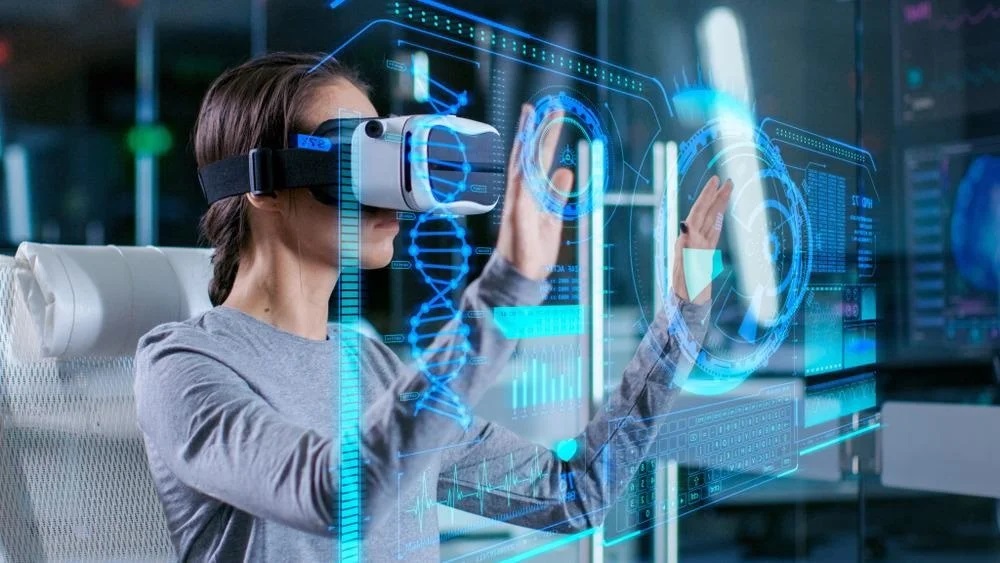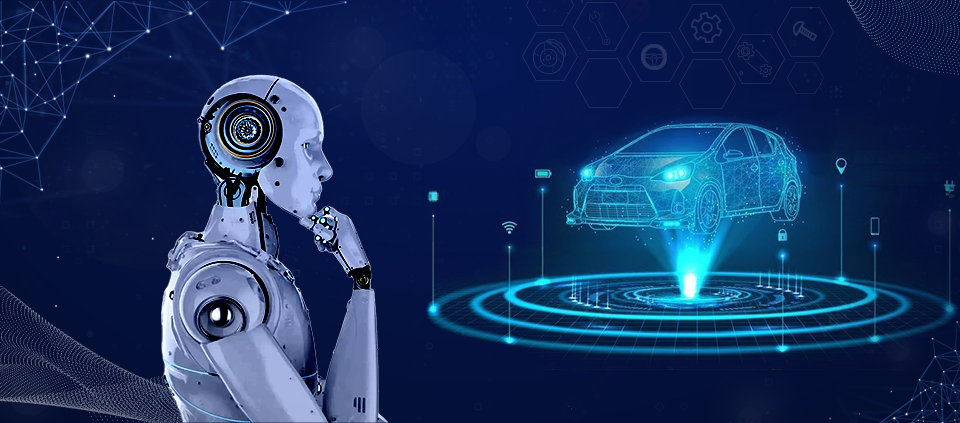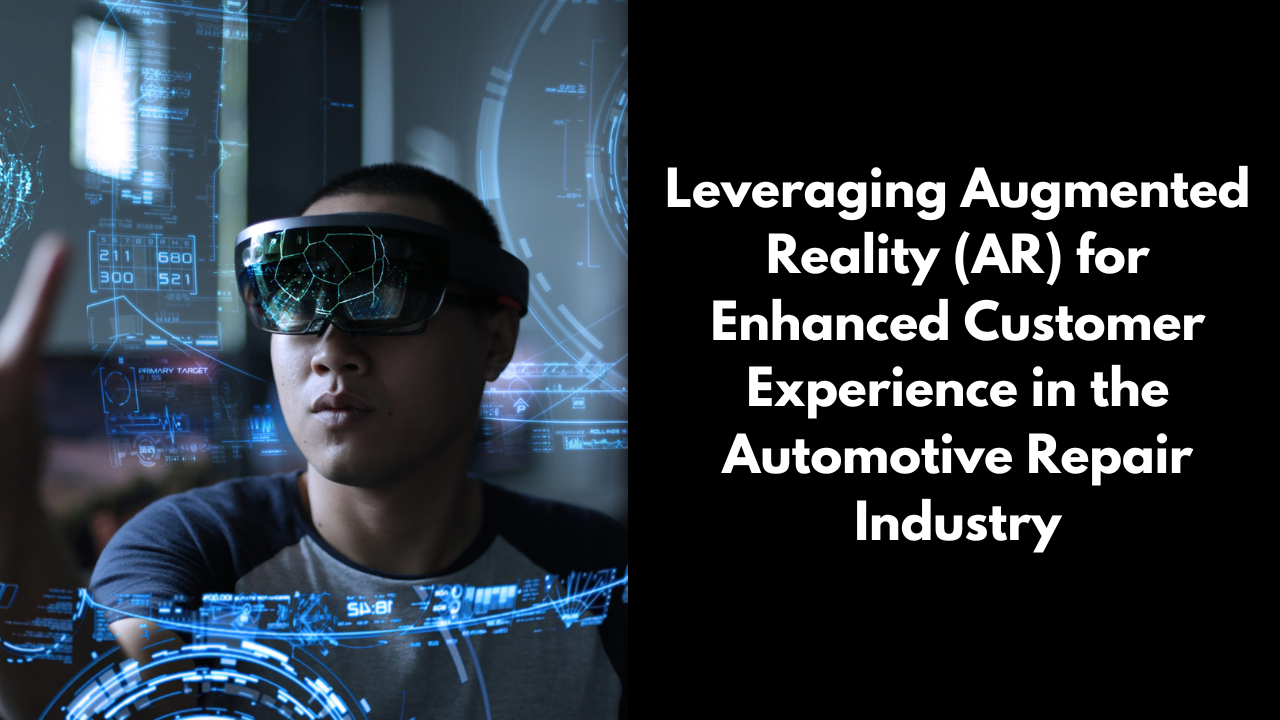In an era where technology is transforming every aspect of our lives, the automotive repair industry is no exception. One of the most exciting advancements making waves is Augmented Reality (AR). While AR has found applications in gaming, retail, and healthcare, its potential in the automotive repair industry is just beginning to be realized. This blog explores how AR can be leveraged to enhance customer experience, streamline operations, and elevate service standards in the automotive repair sector.
Understanding Augmented Reality

Augmented Reality (AR) is a technology that overlays digital information—such as images, videos, or sounds—onto the real world through a device like a smartphone, tablet, or AR glasses. Unlike Virtual Reality (VR), which creates an entirely new digital environment, AR enhances the real-world environment by adding interactive elements.
The Role of AR in Automotive Repair
1. Enhanced Diagnostics and Repair: AR can revolutionize the way diagnostics and repairs are performed in automotive repair shops. Technicians equipped with AR glasses can access real-time data and repair instructions while working on a vehicle. This hands-free approach allows for more accurate diagnostics and efficient repairs. For instance, AR can highlight faulty components, display step-by-step repair guides, and even provide 3D visualizations of complex systems.
2. Improved Customer Communication: One of the biggest challenges in automotive repair is communicating technical issues to customers. AR can bridge this gap by providing visual explanations. For example, during a vehicle inspection, technicians can use AR to show customers the exact problems with their vehicles, overlaying digital images or videos onto the real car parts. This transparency builds trust and helps customers understand the necessity of repairs.
3. Training and Skill Development: AR can play a significant role in training new technicians. Traditional training methods can be time-consuming and less engaging. AR-based training programs can simulate real-life scenarios, allowing trainees to practice repairs in a controlled environment. This interactive learning experience can accelerate skill development and reduce the learning curve for new technicians.
4. Streamlined Inventory Management: Managing inventory efficiently is crucial for any automotive repair shop. AR can streamline this process by providing technicians with real-time information about available parts. For instance, AR glasses can display the location of specific parts in the storage area, reducing the time spent searching for components and ensuring that repairs are completed promptly.
5. Remote Assistance: AR enables remote assistance, allowing expert technicians to provide guidance to less experienced staff in real-time. Through AR glasses or mobile devices, experts can see exactly what the on-site technician is seeing and provide step-by-step instructions. This capability is especially valuable in complex or unfamiliar repairs, ensuring that even smaller shops can access specialized expertise.
Enhancing Customer Experience with AR

1. Interactive Waiting Areas: Integrating AR into waiting areas can transform the customer experience. Instead of traditional magazines and coffee, customers can use AR devices to explore interactive content. For example, they can learn about the latest automotive technologies, view detailed information about the services being performed on their vehicles, or even take virtual tours of the repair shop.
2. Virtual Car Customization: AR can offer customers a unique way to visualize and customize their vehicles. Before committing to upgrades or modifications, customers can use AR to see how different paint colors, wheels, or accessories would look on their cars. This interactive experience not only enhances customer satisfaction but also helps in upselling additional services and products.
3. AR-Enabled Test Drives: For customers considering significant repairs or performance enhancements, AR can provide a virtual test drive experience. By overlaying real-world driving conditions with digital information, customers can get a sense of how the repairs or enhancements will affect their vehicle’s performance. This immersive experience can be a powerful tool in the decision-making process.
4. Real-Time Updates: Keeping customers informed about the status of their repairs is essential for a positive experience. AR can provide real-time updates through mobile apps or AR devices. Customers can track the progress of their vehicle repairs, view estimated completion times, and even receive notifications when their car is ready for pickup. This level of transparency and communication enhances customer satisfaction.
Implementing AR in the Automotive Repair Industry
1. Investment in Technology: Adopting AR technology requires an initial investment in hardware and software. Repair shops need to equip their technicians with AR glasses or mobile devices and invest in AR applications tailored to their needs. While the upfront costs may be significant, the long-term benefits in terms of efficiency and customer satisfaction can outweigh these expenses.
2. Training and Adoption: For AR to be effective, technicians need to be trained in using the technology. This includes understanding how to operate AR devices, navigating AR applications, and integrating AR into their daily workflows. Ongoing training and support are essential to ensure that technicians are comfortable and proficient with the technology.
3. Partnering with AR Developers: Collaboration with AR developers can help repair shops create customized AR solutions that meet their specific needs. Whether it’s developing diagnostic tools, customer communication interfaces, or training programs, working with experts in AR can ensure that the technology is effectively integrated into the repair process.
4. Customer Education: Introducing AR to customers requires educating them about the benefits and functionalities of the technology. Repair shops can conduct demonstrations, provide informational materials, and offer hands-on experiences to familiarize customers with AR. Highlighting the advantages of AR, such as transparency and enhanced communication, can help in gaining customer acceptance and trust.
The Future of AR in Automotive Repair

As AR technology continues to evolve, its applications in the automotive repair industry are likely to expand. Future developments may include more advanced diagnostic tools, greater integration with other technologies like artificial intelligence (AI) and the Internet of Things (IoT), and even more immersive customer experiences. The potential for AR to transform the automotive repair industry is immense, and early adopters will be well-positioned to reap the benefits.
In conclusion, leveraging Augmented Reality (AR) in the automotive repair industry can significantly enhance both operational efficiency and customer experience. From improving diagnostics and repairs to providing interactive customer communication and training, AR offers a range of benefits that can elevate service standards. By investing in AR technology, training staff, and educating customers, automotive repair shops can harness the power of AR to stay ahead in a competitive market and build stronger, more transparent relationships with their clients.

